Although many fans love Hades for its rogue-lite features and its mechanics, the aesthetics of the game is also outstanding. The visual and audio components of Hades formed the atmosphere of a beautiful fantasy in which players never want to leave. Because this topic is too broad, I am only going to focus on the character design and the soundtrack.
The art style of Hades is a 2D dark, fantastical pen & ink style that is inspired by Mike Mignola and Fred Taylor. Although it’s quite dark (since it’s the Underworld), a lot of bold fluorescent colors are used. Since the story is based on the ancient Greek mythology, the architecture, objects, and characters also reflect aesthetics of the ancient Greek. The combination of ancient Greek art, 20th century comic art, and a futuristic cyberpunk color palette makes the game not only look gorgeous, but also badass and sexy.
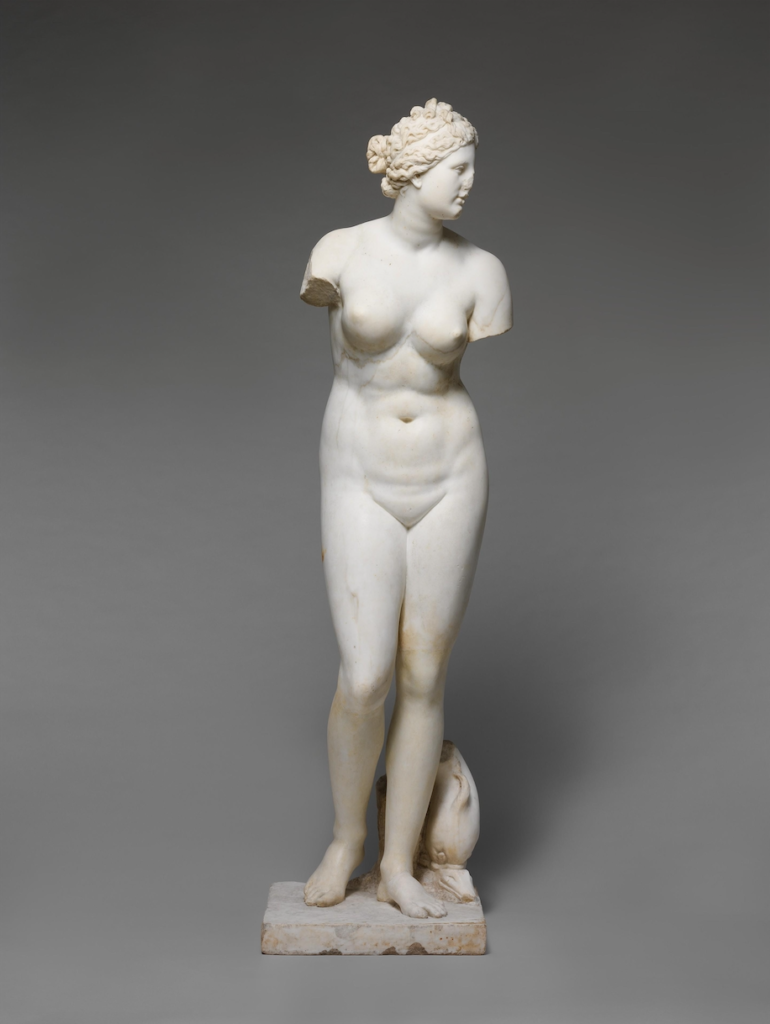
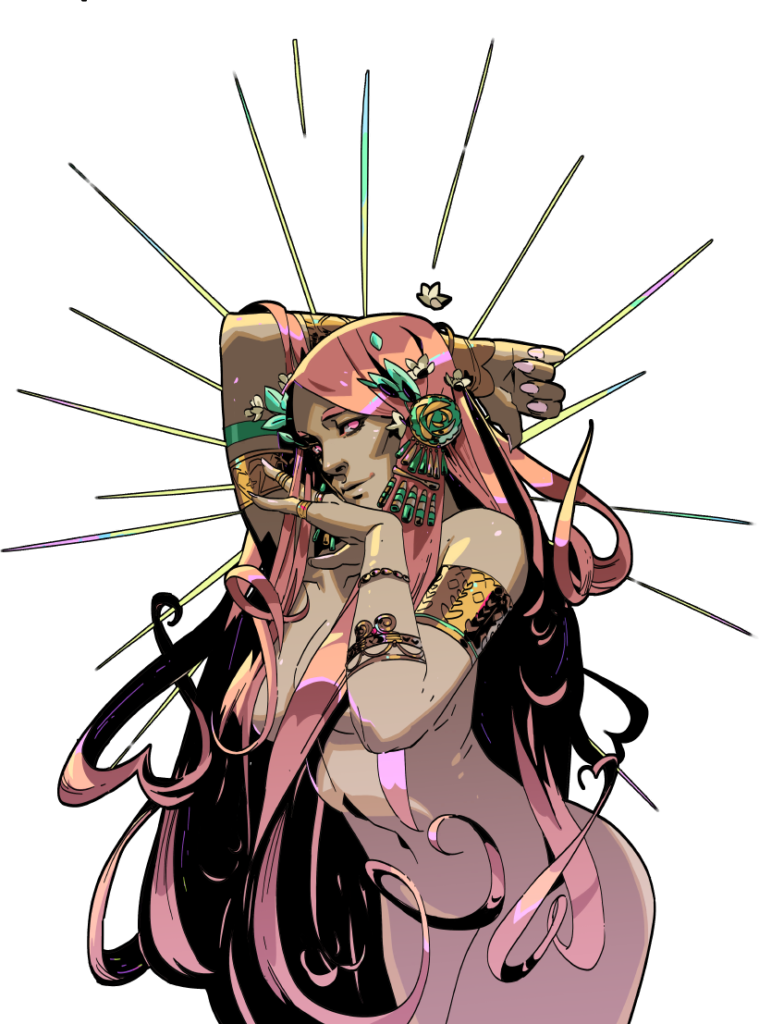
Specifically, I found the comparison between Hades characters and ancient Greek statues very interesting. Just like many Greek human figure statues, many of the characters in Hades are unrealistically strong, muscular, beautiful or perfectly proportioned. These characters reflect the idealism, perfectionism, and harmony that the ancient Greeks and Romans worshipped in human bodies. However, they also have differences. In general, the Hades characters have unrealistic colors and look more futuristic. For example, in Hades, Aphrodite’s skin color is pink. She also has long, baby pink hair that reflects aesthetics popular in the modern Japanese anime culture.

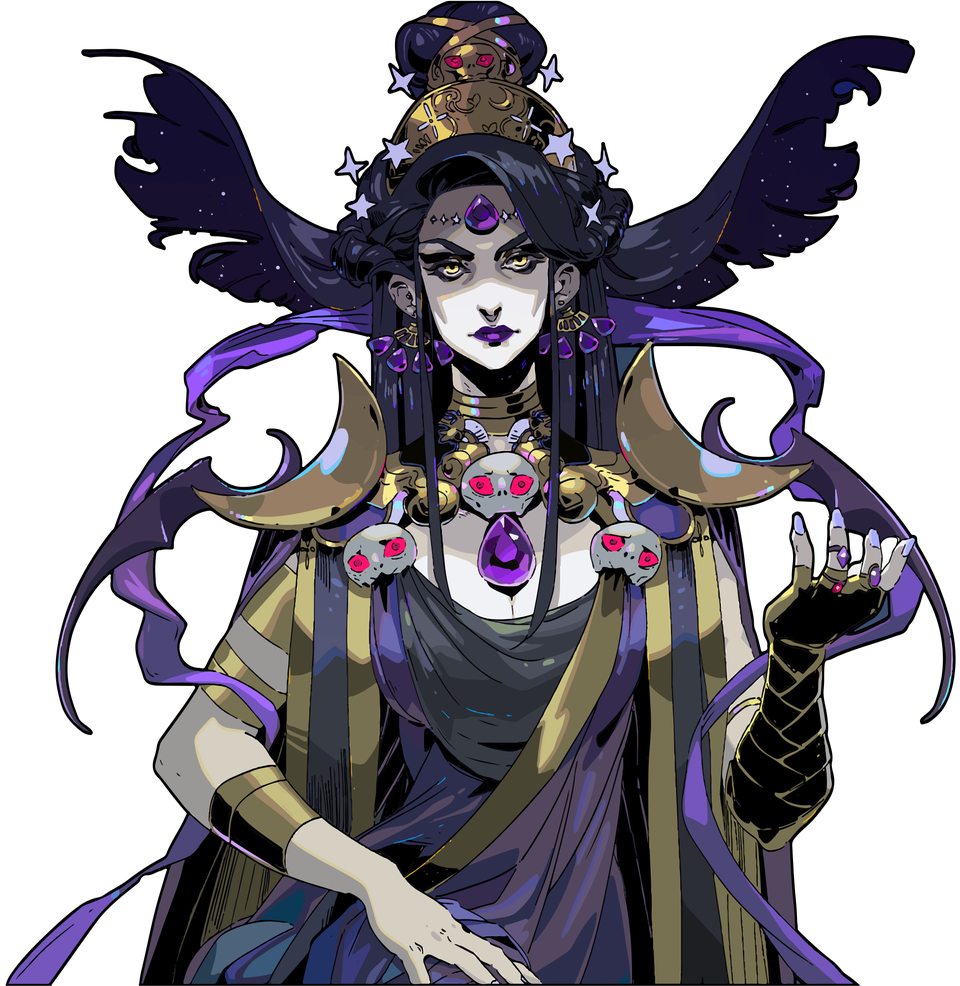
Nyx in Hades has a very Gothic look with heavy make up, refined cheekbones, and dark purple colors. This makes her look more rebellious and seductive than the portrayal of Nyx in an ancient Greek sculpture.
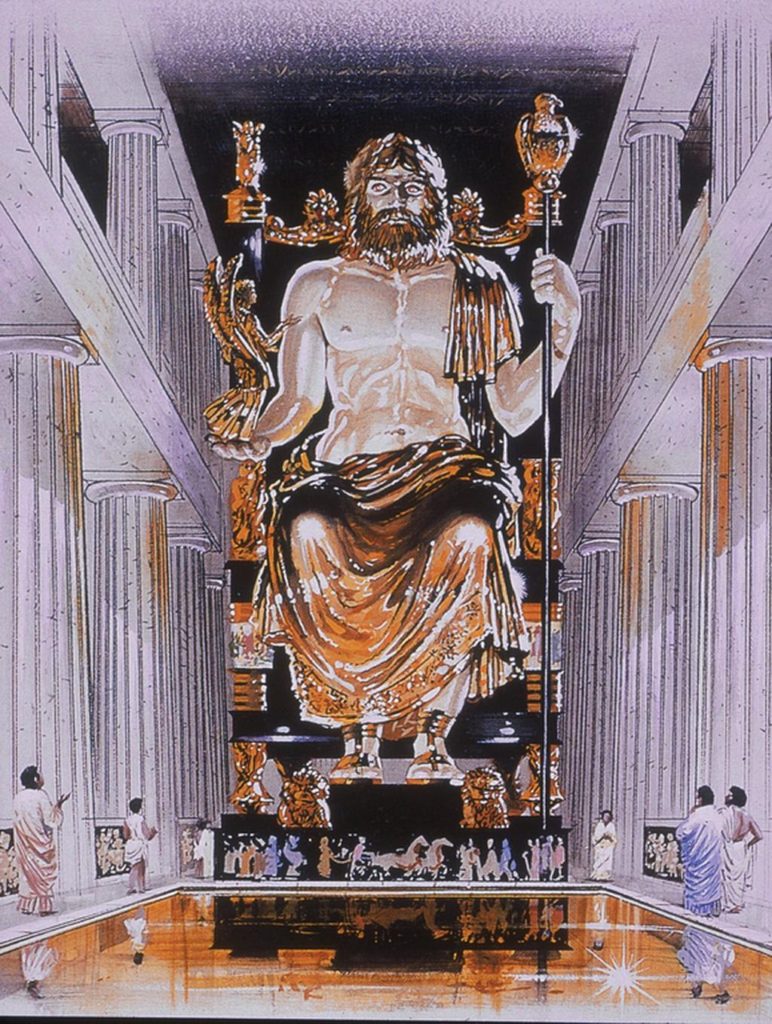
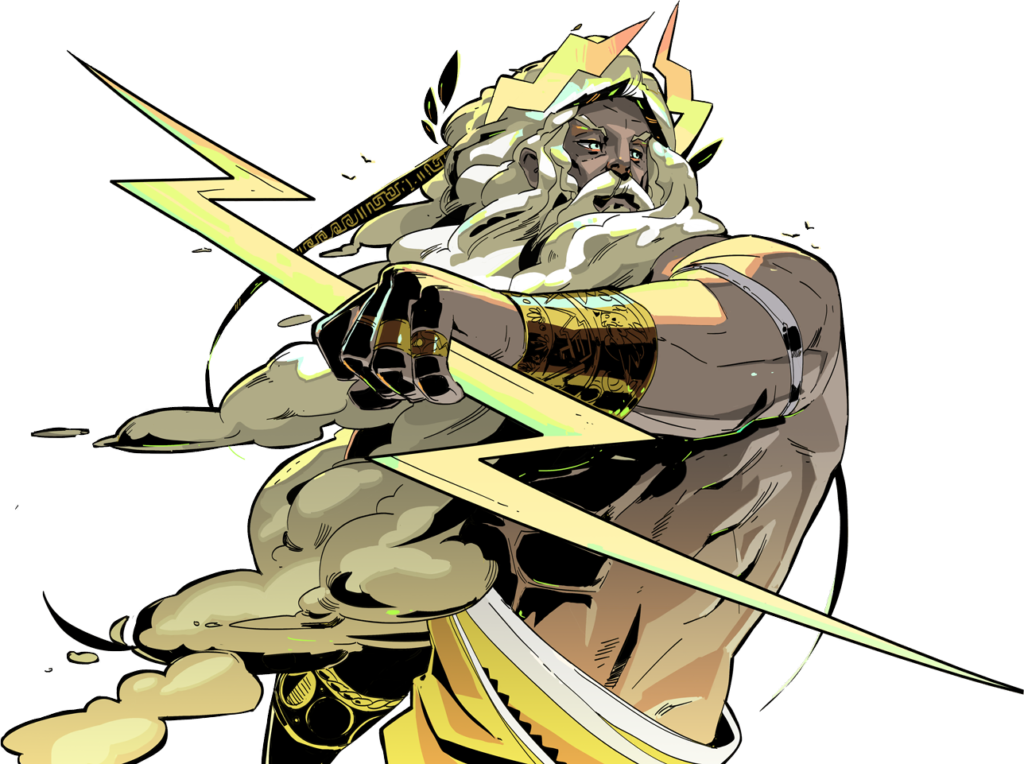
Compared to Aphrodite and Nyx, the aesthetic of Zeus in Hades looks more similar to the image of a statue of Zeus in 435BC. Although Zeus still has a long beard, his beard is now made of clouds, which is less realistic but more fantastical. His color scheme also changed to a futuristic neon yellow, which is a modern aesthetic.
Hades’ soundtrack also left a big impression on me. Even after playing the game, I found myself listening to the soundtrack and feeling the same emotions I felt while playing the game. I think the soundtrack was really well done and the songs made the setting feel more immersive and appealing.
One of my favorites from the soundtrack is In the Blood. It is performed by Darren Korb and Ashley Barrett, although in the game it is sung by Orpheus and Eurydice. The melody and rhythm of the song makes it feel majestic, and the high pitch and lightness of the voices make it feel ethereal. I thought this song not only portrayed Orpheus’s qualities of a “superhuman” composer and musician really well, but also was able to trigger players’ intense emotions. I was not surprised to find that this was inspired by Radiohead’s album OK Computer as I’m a fan of Radiohead 😀
Bibliography
Barton, S. (2021, June 9). Behind the art of hades: “we value artistic integrity and excellence in artistic craft at supergiant, however we’re first and foremost a game design-led team.” – business news. MCV/DEVELOP. Retrieved October 10, 2021, from https://www.mcvuk.com/business-news/behind-the-art-of-hades-we-value-artistic-integrity-and-excellence-in-artistic-craft-at-supergiant-however-were-first-and-foremost-a-game-design-lead-team/.
Hades wiki. Hades Wiki. (n.d.). Retrieved October 10, 2021, from https://hades.fandom.com/wiki/Hades_Wiki.
Maher, C., & Cian Maher (1047 Articles Published) . (2020, September 24). Hades interview – the beatles, Tom Hiddleston, and creating zagreus. TheGamer. Retrieved October 10, 2021, from https://www.thegamer.com/hades-interview-zagreus-darren-korb/.
Marble statue of Aphrodite. (n.d.). [Images]. In Marble statue of Aphrodite [52.11.5] (p. 1). <a href=”https://www.metmuseum.org/”>The Metropolitan Museum of Art</a>. https://jstor.org/stable/community.18682154
Olympia: Temple of Zeus: Reconstruction: colossal statue of Zeus by Pheidias (p. 1). (n.d.). [Images]. https://jstor.org/stable/community.13894011
Pergamon: Altar of Zeus: Gigantomachy frieze: North: Nyx (p. 1). (n.d.). [Images]. Pergamonmuseum (Berlin, Germany). https://jstor.org/stable/community.13900938

One of the things I love about Hades is the combination of Greek mythology with modern ethics – there’s a lot of issues in classical Greek mythology with the portrayal and perception of certain characters, and I think Hades does a wonderful job of portraying them in a light that makes them all not terrible. Zeus, for example, is pretty vile in Greek Mythology, but the portrayal instead is of someone who is just vain and arrogant and presumptuous. Additionally on the music, Nicole called the music sewer music and i can’t unhear it
Yes I agree. I feel like the Greek gods in the original mythology each have their imperfections and hamartias, but that’s not the case in Hades. For example Zagreus is a righteous and close-to-perfect character, which makes players empathize with him a lot. I think the romanticization of the greek gods in Hades is another component that makes this game so beautiful and aesthetic.
I really appreciate your in-depth analysis of Hades aesthetics. I want to focus on one thing specifically you said about the aesthetic: that the characters are badass and sexy.
I am sure there are many motivations for the characters to be sexy, but that they are I think really adds to the dating aspect of the game’s narrative. It makes characters who are dateable attractive and mysterious, and in doing so further immerses a player into the world of Hades. You could say that in a way, the player is seduced further into the game.
I did not play Hades, but I noticed something interesting about the Hades’ aesthetics while doing research into its dating element. You have to present dateable characters with several bottles of Nectar before they offer you a quest, and after you complete the quest you can progress your relationship by offering them a bottle of Ambrosia; Nectar is a more common and less powerful while Ambrosia, in contrast, is both rare and more powerful. Objectively, if you are using these items to try to date, you are using them to build what the narrative might consider lust or attraction. And Ambrosia is more effective at this, or at the very least is the final and necessary step. Here’s what I think is wild: the Ambrosia bottle is sexier than the Nectar bottle. The Nectar bottle has soft edges and in a way looks innocent, and the Ambrosia bottle is more edgy, elegant, and refined. Presumably, this reflects their power in terms of gaining a Companion, which I think is very much related to the lust/attraction in the aesthetics of the game.
Nectar: https://hades.fandom.com/wiki/Nectar
Ambrosia: https://hades.fandom.com/wiki/Ambrosia
Woah this is SO COOL!!! Thanks so much for connecting this detail. I totally agree about the correlation between lust/attraction and the aesthetics of the game.
I love your point about the exaggerated colors playing a large role in this game’s aesthetic. I think that the use of these colors (let’s take Aphrodite’s pink as an example) also serves a gameplay purpose, in helping the player immediately recognize the Boons that they are using and the type of damage that they are doing. Some Boons give bonuses for inflicting multiple types of damage, so using the colors to signify what is actually happening on screen is super helpful, in addition to beautiful.
I totally agree. This is a really good point that I did not consider! And I think they not only serve as a distinction between different Boons and levels of damage, but also serve to dramatize the damages and effects, making the attacks feel extra satisfying.
I really enjoyed reading your analysis of the Hades aesthetic! I wanted to bring up some design decisions by the Supergiant team I’ve come across in interviews, documentaries, and discussions online that I feel can add to the discussion (though yeah this discussion is likely dead and I’m late because I was locked out of my account). Unfortunately I won’t be posting all my sources, but the documentary I watched is the six part series that covered two years of Hades’s developement process on noclip’s youtube channel.
One interesting thing I remember them mentioning was the distinction in accents for the voices done for the different characters. Typically in fantasy genres, there is a tendency to turn to some form of English accents. Greg Kasavin, creative director of Supergiant, remarks in this steam discussion (https://steamcommunity.com/app/1145360/discussions/0/2632850028533853248/ post #8) that there was a decision to use a mix of American and British accents to subtly allude to a character’s origins. Those who come from the surface speak with a vaguely British accent, and those from the underworld speak with American accents. There was also a decision for American accents to be used for non-human characters who are not necessarily of the underworld like Eurydice. Seeing this come up made me think about how accents and audio design can contribute to a game or genre’s setting, something I had not really considered before.
It’s also fun to note that Darren Korb, who you mentioned above and is also the soundtrack composer and audio director, also voiced Zagreus and Skelly for the game.
And just as a fun tidbit, Jen Zee, the art director for the game, said in a interview (I saw this live on a Zoom call, but I forgot what the event name was) that she originally wanted to make all the characters naked (like Aphrodite), inspired by ancient Greek statues, but was ultimately vetoed.